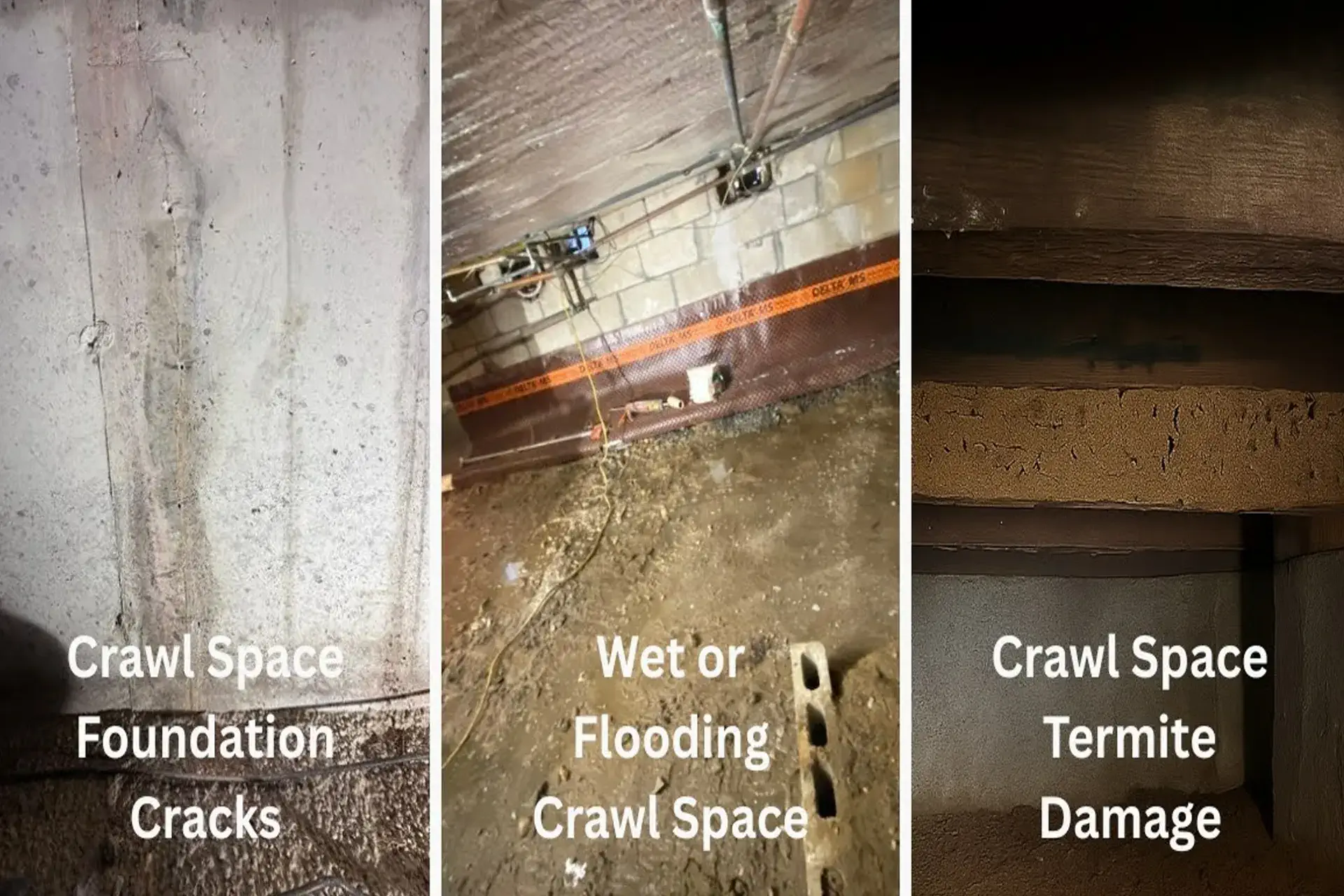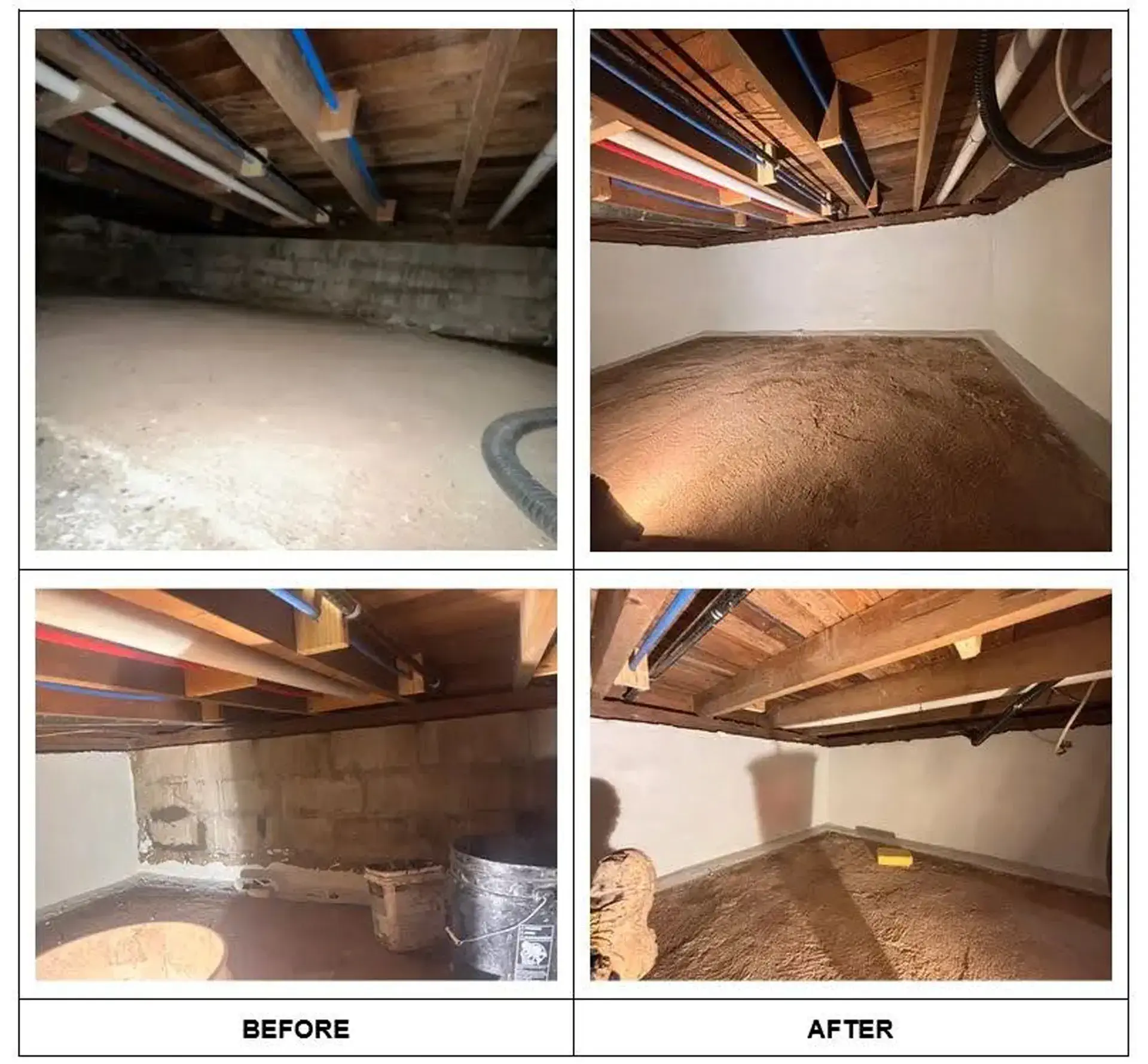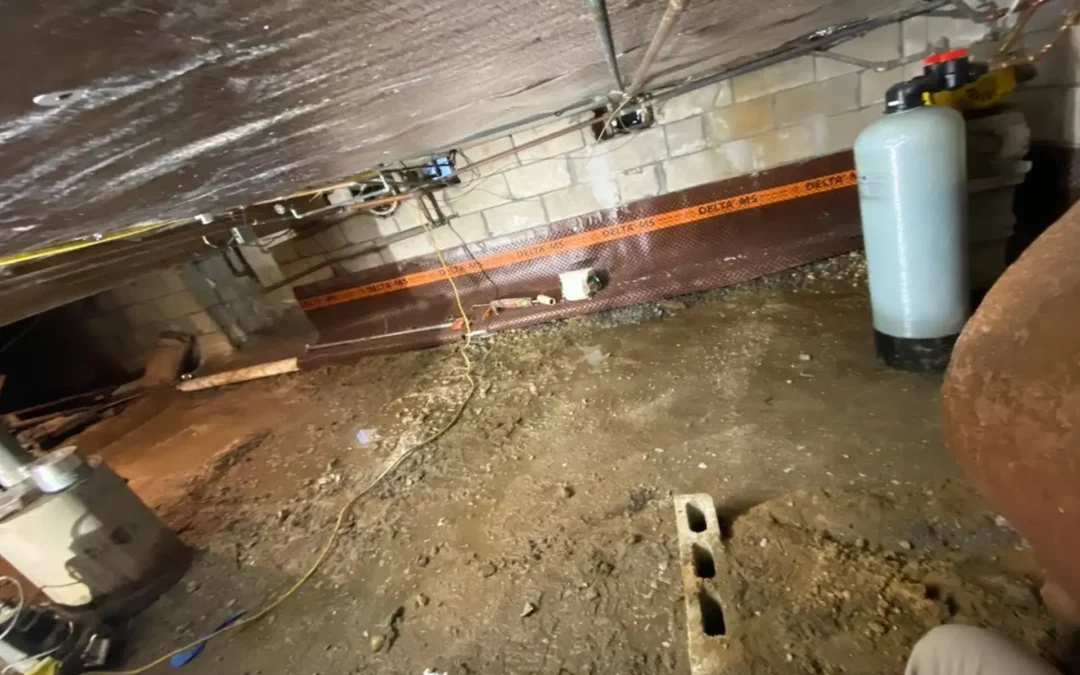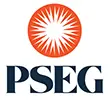Crawl space problems often start without you even noticing. A little moisture, a bit of humidity, a small leak… The problem is, the damage can spread faster than you would expert into major structural damage, mold growth, poor air quality, and costly repairs.
On Long Island, crawl space damage accelerates even faster. High humidity, coastal storms, temperature swings, and periodic flooding create ideal conditions for crawl space water damage and the mold and wood deterioration that follow. Without early treatment or crawl space water damage repair, homeowners risk long-term structural decline and reduced home value.
Zavza Seal specializes in uncovering these hidden issues. As Long Island experts in crawl space waterproofing, structural repair, mold remediation, and foundation restoration, we diagnose problems early and deliver lasting crawl space water damage solutions.
In this guide, you’ll learn the types of damage to watch for, early warning signs, repair options, prevention strategies, insurance considerations, and when to get help.
Keep Moisture Out, Protect Your Structure, And Restore Peace Of Mind

Types Of Crawl Space Damage Homeowners Need To Know
Crawl spaces can experience several different forms of deterioration, and each one affects your home in a unique way. From moisture intrusion and mold growth to structural weakening and pest activity, the crawl space problems below are the most common issues homeowners face, and the ones most likely to stay hidden until they become serious.
Below, you’ll find a clear breakdown of each major type of crawl space damage, what causes it, crawl space problems to watch for, and the crawl space damage solutions available to protect your home.
Crawl Space Water Damage
Crawl space water damage is one of the most common and destructive issues Long Island homeowners face. With coastal storms, heavy rainfall, high humidity, and fluctuating temperatures, moisture intrusion becomes almost unavoidable without proper protection. Once water enters the crawl space, it begins a cycle of deterioration that can affect the home’s structure, air quality, and long-term value.
Most crawl space water damage starts with simple causes: heavy rainfall pooling around the foundation, plumbing leaks, poor exterior drainage, groundwater flooding, or vapor rising naturally through the soil. Left unchecked, moisture spreads through the crawl space and eventually makes its way into the living areas above.
Typical Symptoms Include:
- Standing or pooling water
- Persistent musty or damp odors
- Warped or soft floors
- Visible mold or mildew growth
Zavza Seal’s waterproofing team eliminates moisture at the source, providing complete crawl space water damage repair and long-term crawl space water damage solutions tailored to Long Island’s climate.
Common Solutions:
- Sump pump installation
- French drain or interior drainage systems
- Full encapsulation with heavy-mil vapor barriers
- Crawl space vapor barrier replacement
- Dehumidification systems
Prevention:
- Downspout and gutter extensions
- Proper grading to divert water away from the home
- Annual crawl space inspections and moisture checks

Case Study: Crawlspace Waterproofing and Drainage Improvement – Westbury, NY
A homeowner in Westbury, NY contacted Zavza Seal LLC after noticing persistent crawlspace moisture and poor air quality. Upon inspection, our team found multiple contributing factors including water intrusion through the cinder block foundation, uninsulated rim joists, and improper downspout drainage.
The comprehensive solution addressed three main areas:
- Waterproofing 132 square feet of crawlspace wall
- Insulating and air sealing 22 linear feet of rim joists
- Installing four extended downspouts with a drywell drainage system
Problem:
- Persistent crawlspace moisture and elevated humidity levels
- Water seeping through porous cinder block walls
- Energy loss from unsealed rim joists
- Poor exterior drainage allowing water to pool near the foundation
Solution:
- Crawlspace Wall Waterproofing: Cleaned and prepared wall surfaces, applied 6,000 PSI waterproofing cement, reinforced with fiberglass mesh, and added two final coats for complete moisture protection.
- Rim Joist Insulation: Installed R-18 closed-cell polyethylene foam with reflective foil and sealed all edges using spray foam insulation for airtight energy performance.
- Downspout Drainage and Drywell System: Extended four downspouts below grade using solid PVC piping. Added 5-gallon drywells set on gravel beds with pop-up emitters to discharge excess water and prevent foundation backflow.
Results:
- Crawlspace walls sealed with industrial-grade waterproofing
- Rim joists insulated and air-sealed for improved energy efficiency
- Downspout and drainage system upgraded to redirect water safely away from the home
- Improved indoor air quality and reduced crawlspace humidity
- Enhanced foundation durability and homeowner peace of mind
Need Expert Crawlspace Waterproofing or Drainage Solutions in NY? Call Zavza Seal LLC Today to Schedule Your Free On-Site Assessment.
Mold Growth And Trichoderma/Stachybotrys Contamination
Where there’s moisture, mold is never far behind. Crawl spaces that experience water intrusion or chronic humidity quickly become ideal environments for crawl space mold. The danger isn’t limited to the crawl space itself. Mold spores travel upward through the stack effect, meaning contaminated air from below circulates into bedrooms, living rooms, and HVAC systems.
Common crawl space molds include Trichoderma, Stachybotrys (often called black mold), and Aspergillus. While each grows under slightly different conditions, they all create structural risks and potential health concerns. Homeowners may notice allergy-like symptoms, persistent musty odors, and signs of wood or insulation decay.
Symptoms Typically Include:
- Musty or earthy smells
- Allergy flare-ups or respiratory irritation
- Soft or crumbling wood
- Visible white, green, or black mold patches
Zavza Seal specializes in mold remediation AND root-cause waterproofing, ensuring mold is removed safely and the conditions that caused it are permanently corrected.
Solutions:
- Professional mold remediation
- HEPA vacuuming and thorough surface cleaning
- Antifungal and antimicrobial treatment
- Moisture control and structural drying
Prevention:
- Crawl space encapsulation
- Active dehumidification
- Maintaining low humidity and proper airflow
Wood Rot and Structural Beam Damage
When moisture infiltrates a crawl space, wood framing begins to absorb it like a sponge. Over time, wet lumber loses its strength, becoming soft, weak, and unable to support the structure above. Early warning signs such as sagging or bouncy floors, cracked drywall, or gaps between baseboards and flooring often indicate hidden structural decay.
Once wood rot sets in, it rarely stays confined to one beam, it can compromise the entire load path of the home, requiring urgent structural intervention.
Symptoms Typically Include:
- Sagging, uneven, or bouncy floors
- Cracked drywall or door frames that no longer close properly
- Gaps between trim, flooring, or baseboards
- Soft or spongy wood visible in the crawl space
Common Solutions:
- Replacement or sistering of damaged beams
- Installation of LVL (laminated veneer lumber) beams
- Adjustable steel jacks and support piers
- Structural releveling and reinforcement
Prevention:
- Crawl space encapsulation to block moisture
- Active dehumidification for humidity control
- Proper insulation to prevent vapor buildup
Termite Damage in the Crawl Space
Termites thrive in dark, damp environments, making unprotected crawl spaces a prime target. Once they colonize, they feed from the inside out, often going unnoticed until serious structural damage occurs. By the time visible signs of termite damage in your crawl space appear, the integrity of joists, beams, and subflooring may already be compromised.
Symptoms Typically Include:
- Mud tubes running along walls, piers, or foundation edges
- Hollow-sounding or crumbling wood
- Small piles of discarded termite wings
- Uneven or sagging floors above the crawl space
Common Solutions:
- Professional termite extermination and treatment
- Replacement or reinforcement of damaged beams
- Structural repairs and sistering for weakened joists
- Crawl space encapsulation to remove moisture conditions
Prevention:
- Soil and perimeter termite barrier treatments
- Regular inspections for signs of activity
- Controlled humidity and full crawl space encapsulation
Foundation Cracks and Settlement Beneath the Crawl Space
The soil beneath a crawl space is constantly shifting due to moisture and temperature changes. Over time, this causes the foundation to settle unevenly, creating foundation cracks, misaligned doors, and sloping floors. Foundation settlement worsens as soil movement continues.
Symptoms Typically Include:
- Cracks in interior walls, ceilings, or foundation blocks
- Sticking doors or windows that won’t close properly
- Tilting or sinking crawl space piers
- Uneven or sloping floors
Common Solutions:
- Helical pier installation and structural lifting
- Underpinning and load stabilization systems
- Soil compaction and reinforcement
- Drainage improvements to reduce soil saturation
Prevention:
- Proper exterior grading to direct water away from foundation walls
- Gutter extensions and perimeter drains to control runoff
- Moisture management around the foundation year-round
Plumbing Leaks Inside the Crawl Space
Plumbing problems beneath the home often go undetected for months, making them one of the most damaging crawl space issues. Frozen pipes, slow leaks, and ruptured supply lines can release water directly into the crawl space, soaking insulation, saturating wood, and triggering mold growth. Over time, these hidden leaks weaken joists, subflooring, and framing, leading to structural deterioration and poor indoor air quality.
Because plumbing leaks are often silent, homeowners typically notice them only after water damage, odors, or visible mold appear.
Zavza Seal coordinates with licensed plumbers and handles complete moisture restoration, ensuring both the leak and resulting damage are properly corrected.
Symptoms Typically Include:
- Damp or musty odors under or inside the home
- Visible standing water or wet insulation
- Mold growth on joists or subflooring
- Increased water bills with no visible leak
Common Solutions:
- Pipe repair or full replacement
- Standing water extraction and drying
- Structural drying and dehumidification
- Crawl space encapsulation and vapor barrier sealing
Prevention:
- Insulating exposed or vulnerable plumbing lines
- Annual plumbing inspections and crawl space checks
- Maintaining consistent indoor and crawl space temperatures
Crawl Space Insulation Damage
Crawl space insulation is highly susceptible to moisture, pests, and age. Wet fiberglass absorbs water like a sponge, leading to sagging batts, mold growth, and a drastic drop in energy efficiency. Damaged or missing insulation also traps humidity, accelerating wood decay and raising energy costs.
Pests further compound the issue by tearing through insulation, leaving open gaps that allow cold air and moisture to circulate freely beneath the home.
Zavza Seal replaces old materials with closed-cell spray foam or fully insulated encapsulation systems that protect the crawl space and stabilize indoor comfort year-round.
Symptoms Typically Include:
- Hanging or sagging fiberglass insulation
- Visible mold or mildew on insulation or joists
- Drafty or cold floors above the crawl space
- High energy bills or uneven indoor temperatures
Common Solutions:
- Removal of wet, damaged, or contaminated insulation
- Mold and mildew treatment on affected surfaces
- Installation of closed-cell spray foam or insulated wall liners
- Encapsulation to maintain consistent humidity and temperature
Prevention:
- Continuous dehumidification system
- High-quality vapor barrier installation
- Regular insulation and moisture inspections
Pest Infestations (Rodents, Raccoons, Insects)
Crawl spaces provide pests with the ideal mix of darkness, warmth, and shelter. Rodents, raccoons, and insects frequently chew insulation, shred vapor barriers, damage wiring, and contaminate surfaces, creating unsafe conditions and structural damage. These intrusions also introduce moisture, bacteria, and foul odors that affect indoor air quality.
Zavza Seal provides full exclusion and restoration, sealing entry points, cleaning and sanitizing affected areas, and correcting the moisture issues that attract pests in the first place.
Symptoms Typically Include:
- Droppings, nesting materials, or shredded insulation
- Chewed or exposed wiring and vapor barrier damage
- Noises from beneath the floor or walls
- Open vents, cracks, or foundation gaps
Common Solutions:
- Professional pest removal and exclusion
- Cleanup, sanitization, and odor control
- Insulation and vapor barrier replacement
- Moisture management and crawl space encapsulation
Prevention:
- Proper humidity and moisture control
- Sealing all cracks, vents, and foundation openings
- Regular inspection of crawl space access points
Soil Erosion and Standing Water Under the Home
Soil erosion beneath the crawl space happens when heavy rain, poor drainage, or leaking pipes wash away the supporting soil. As the soil weakens, crawl space piers and supports can tilt, sink, or settle unevenly, compromising the home’s stability.
Standing water worsens erosion by saturating the soil, leading to ongoing foundation settlement, wood decay, and mold growth. If left untreated, erosion can cause floor sagging, misalignment, and chronic moisture problems that spread throughout the structure.
Zavza Seal corrects erosion with professional drainage systems, vapor barriers, and soil stabilization designed for Long Island’s unique weather and soil conditions.
Symptoms Typically Include:
- Standing water or puddles in the crawl space
- Soft or washed-out soil near piers or walls
- Tilting or sinking crawl space supports
- Uneven or sagging floors above
Common Solutions:
- French drain and drainage correction systems
- Crawl space leveling and pier adjustment
- Soil stabilization and compaction
- Installation of vapor barriers and sump pumps
Prevention:
- Proper yard grading to direct runoff away from the home
- Waterproofing and crawl space encapsulation systems
- Regular inspection of drainage and soil stability
Encapsulation Materials and Vapor Barrier Damage
A crawl space is only as dry as its encapsulation system. When vapor barriers are thin, torn, or poorly sealed, ground moisture seeps upward into the crawl space, creating humidity, mold growth, and poor indoor air quality.
Even small rips or loose seams can defeat the purpose of encapsulation, allowing water vapor to infiltrate and undermine the system’s integrity.
Zavza Seal installs 20-mil vapor liners that are fully sealed, mechanically fastened, and reinforced for long-term protection against moisture intrusion.
Symptoms Typically Include:
- Visible tears or gaps in the vapor barrier
- Condensation or moisture droplets under the liner
- Persistent humidity or musty odor in the crawl space
- Mold or mildew forming on wood or insulation
Common Solutions:
- Complete vapor barrier liner replacement
- Professional seam sealing and edge fastening
- Dehumidifier installation for humidity control
- Full crawl space encapsulation with 20-mil materials
Prevention:
- Annual crawl space and liner inspections
- Maintaining proper humidity levels below 60%
- Routine dehumidifier maintenance and monitoring
Electrical and HVAC Damage in the Crawl Space
Flooding, high humidity, and pest activity can cause serious damage to electrical wiring, ductwork, and HVAC components beneath the home. Wet insulation, corroded metal, or chewed wiring reduce efficiency and create fire or shock hazards. Because these systems sit close to the ground, they’re often the first to suffer when moisture enters the space.
Zavza Seal ensures all moisture is removed before any electrical or HVAC repairs begin, creating a safe, dry, and stable environment for restoration and long-term protection.
Symptoms Typically Include:
- Rusted or corroded metal ducting
- Chewed or exposed electrical wiring
- Poor airflow or inconsistent indoor temperatures
- Moisture condensation on ducts or electrical components
Common Solutions:
- Duct cleaning, sealing, or full replacement
- Electrical system safety inspection and rewiring (by licensed partners)
- Insulation replacement and vapor barrier repair
- Structural drying and moisture removal
Prevention:
- Full crawl space encapsulation
- Active dehumidification and ventilation control
- Routine HVAC and crawl space inspections
Does Homeowners Insurance Cover Crawl Space Damage?
Many homeowners wonder, does homeowners insurance cover crawl space damage? The answer depends on what caused the problem.
Insurance typically covers:
- Sudden or accidental damage, such as a burst pipe
- Isolated events that were not preventable by maintenance
Insurance rarely covers:
- Long-term moisture, neglect, or slow leaks
- Mold due to humidity or chronic dampness
- Termite or pest damage
Flooding from storms or groundwater is not covered unless the homeowner has a separate flood insurance policy. Because coverage depends heavily on documentation, keeping accurate moisture readings, photos, and inspection reports is essential.
Zavza Seal provides detailed inspection reports and moisture readings homeowners can use to support insurance claims.
When To Get A Damaged Crawl Space Repair Quote
If you suspect hidden issues beneath your home, now is the time to request a damaged crawl space repair quote. Small symptoms often signal deeper problems that require professional attention.
Common red flags include:
- Musty or damp odors
- Sagging or bouncy floors
- Cold floors in winter
- Visible moisture or standing water
- Mold or mildew growth
- Signs of pests or damaged insulation
Zavza Seal offers free or discounted inspections depending on your Long Island service area, helping homeowners identify the problem early and avoid more expensive repairs later.
Why Long Island Homeowners Choose Zavza Seal For Crawl Space Damage Repair
Long Island homes face unique moisture, soil, and climate conditions—and Zavza Seal has spent decades building solutions tailored to them. Our team specializes in crawl space waterproofing, mold remediation, structural repairs, insulation upgrades, drainage systems, and foundation stabilization.
Homeowners choose us because we deliver:
- Fast turnaround on repairs
- Financing options to make projects manageable
- Licensed & insured specialists for every service
- 5-star reviews and a proven local reputation
- Deep knowledge of Long Island building conditions
From the first inspection to the final quality check, we provide durable, high-trust solutions built to last.
Restore Your Crawl Space. Protect Your Home. Reclaim Your Peace Of Mind.
You’ve now seen the most common types of crawl space damage, how they develop, the symptoms to watch for, and the solutions that protect your home. Whether the issue is moisture, mold, pests, structural weakening, or shifting soil, addressing it early prevents major repairs, safeguards your indoor air, and preserves your home’s value.
Your Home Deserves a Dry, Safe, and Healthy Foundation, and We’re Here to Make That Happen. Schedule Your Assessment Now!








